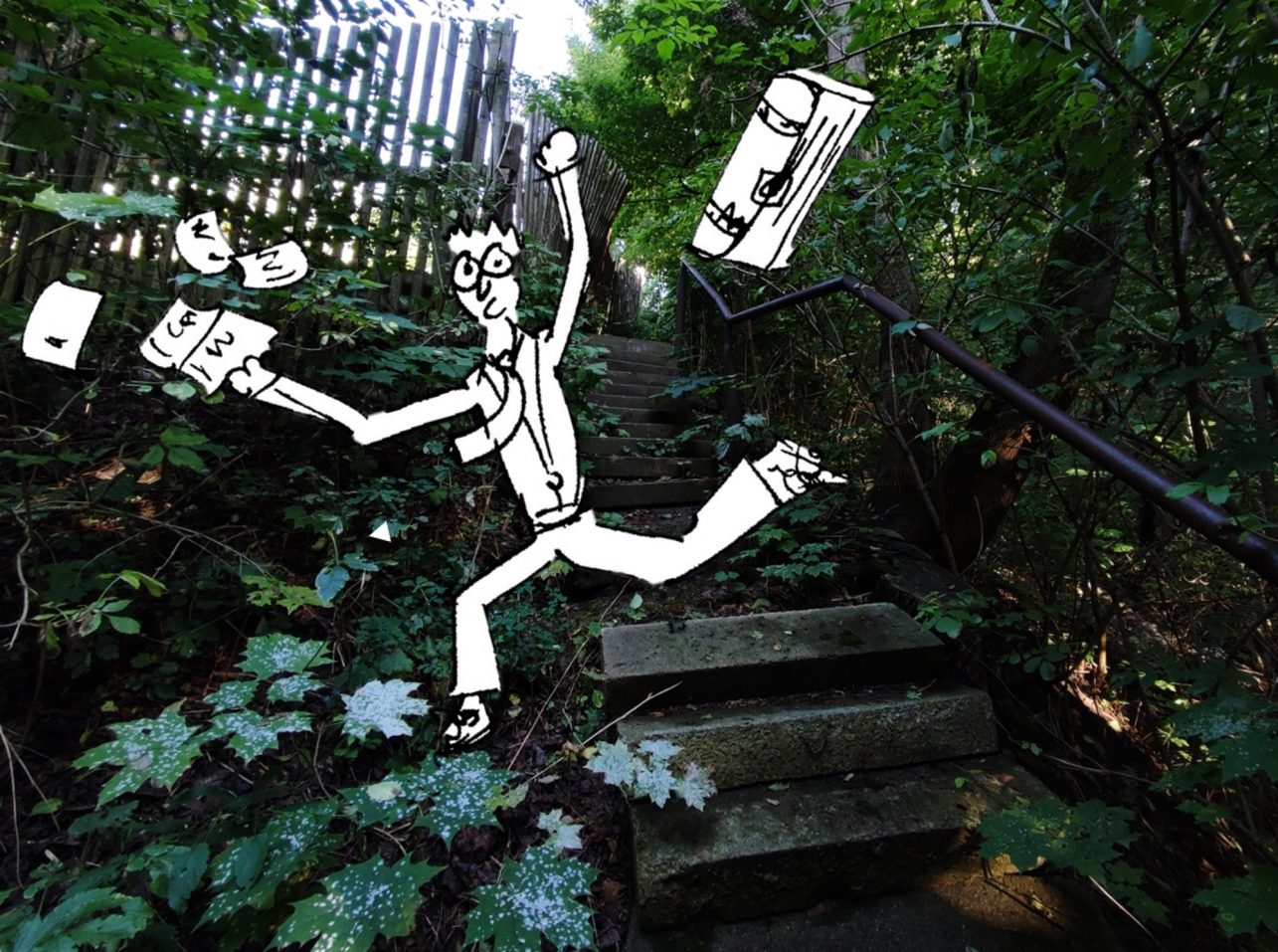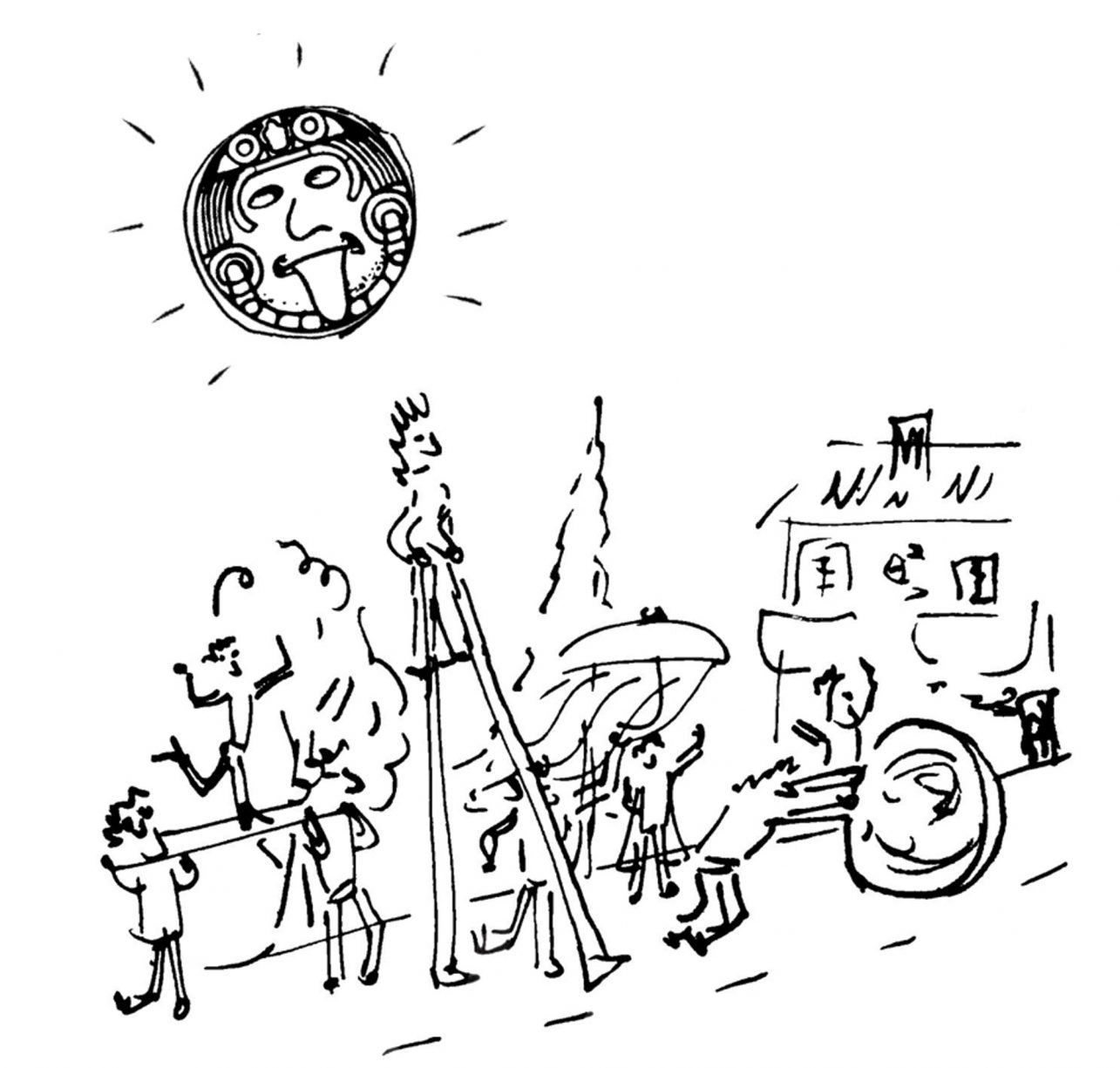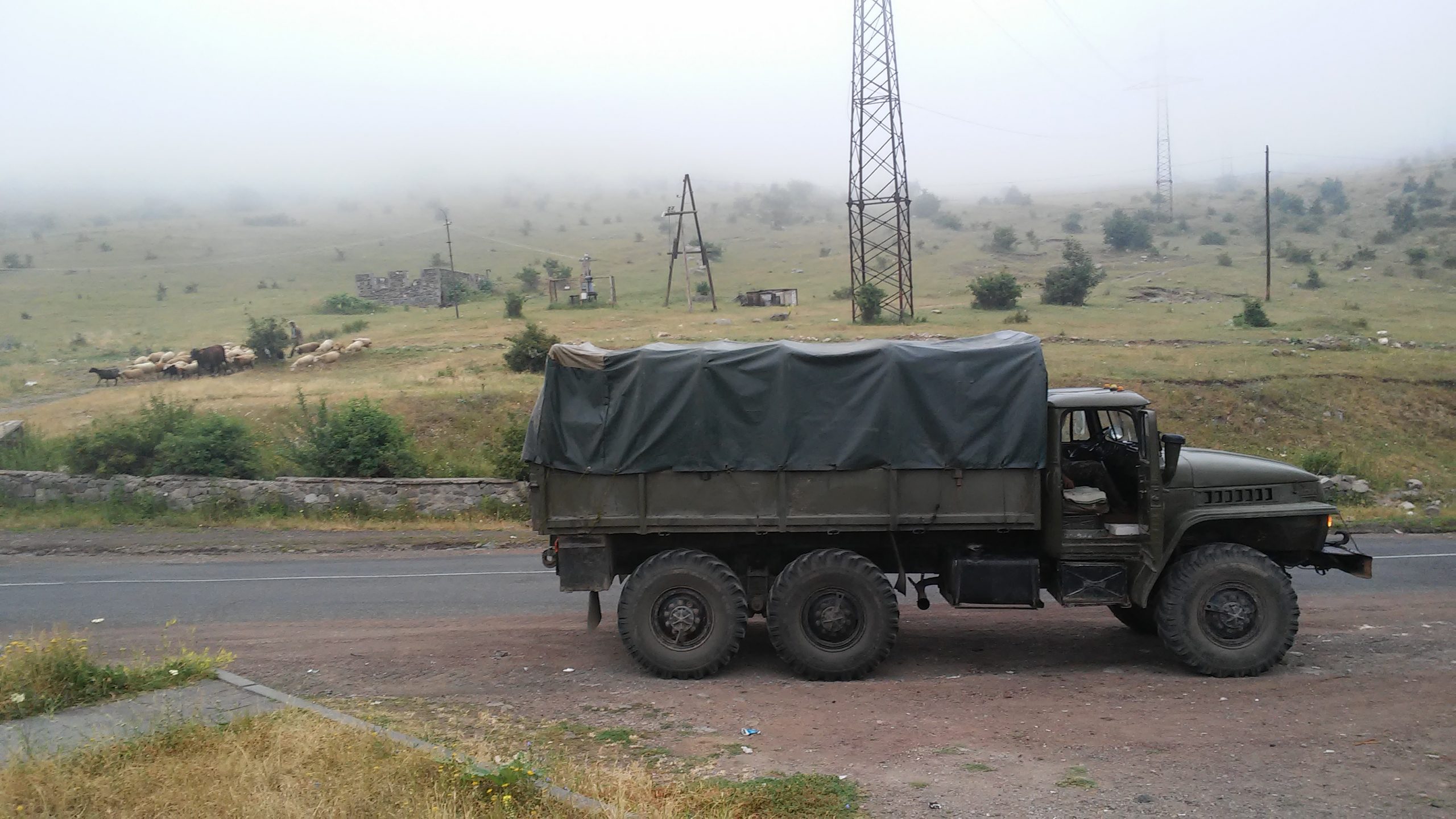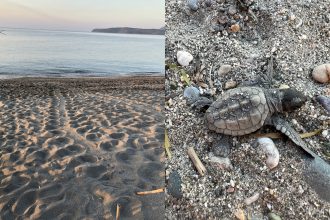Looking at the center of Kaunas, it is easy to see that it is strictly framed by the slopes of two river valleys. It was this geographical barrier that shaped the identity of Kaunas for many years, separated the social strata, and even gave the city its name. According to one theory, the name Kaunas comes from an Indo-European root meaning “low, located in a valley.” It seems like the city itself did not know what to do with such a strange nature’s prank, which had the audacity to emerge exactly where space was most needed during expansion. To this day, Žaliakalnis slope remains one of the most contrasting and curious places in Kaunas. This article is like a travel guide for everyone who has decided to try the exoticism of the “Lithuanian Alps” and find the most impressive way to climb the Žaliakalnis slope, which we all seem to be very familiar with.
We start the journey in the western part of the slope where the witnesses of the rarely remembered history of Kaunas – the Lima stairs – are lurking in the shade of the trees. Those who want to test them will be disappointed: due to the abundance of weeds that cover the steps of the stairs like a carpet and their very sorry state as well as a rather steep slope (22 degrees, according to my protractor), climbing this way is not recommended. However, the crooked steps speak of the colorful history of the slope. Many people can attribute the exotic name of Lima to the influence of the nearby Brazilka and Argentinka districts. Perhaps having run out of American country names, the residents of Kaunas resorted to the names of their capitals. However, the true origin of the stairs’ name is much simpler. During the interwar period, in the spot where IKEA is currently located, stood a textile factory named Lima, which employed many residents of Žaliakalnis. According to Lietuvos žinios issue of January 15, 1938, Lima was a young but successful textile factory, and its products “in every respect do not lag behind foreign fabrics.” This story also has a dark side. Some workers were forced to build on the dangerous slopes of Jonavos Street, unable to fit in the overcrowded Kaunas during the interwar period. So, such stairs like Lima were the only way to get to their house for many. This practice proved extremely risky during the Neris floods, with stories of flooded houses, landslides caused by the river, and property lost in the water.

Just a few hundred meters to the southwest, Kaunas takes on a completely different face. The nettles of the Lima stairs are replaced by the picturesque slopes of the Oak Hill. The existence of this Žaliakalnis “peninsula”, which mischievously juts out into the city center, was most enjoyed by Kaunas residents of previous eras. In the 17th century, this hill was part of the defensive wall of the city. While in other parts of the city, a brick wall had to be built, the Oak Hill, carved with caverns and ditches, was considered a sufficient natural barrier to stop potential invaders. However, as the city expanded, the hill was increasingly seen as an obstacle. During the interwar period when the problem of communication with the city center was extremely acute, the planners of the street network of the temporary capital proposed to pierce the hill with a tunnel. This architectural venture would have connected Gimnazijos Street with P. Vileišis Bridge and, according to experts at the time, reduced the intensity of the traffic in the center. Today, as I climb Benediktinių Street tilted at a 10-degree angle, I can hear the cars stuck int he traffic bellow. Who knows, maybe it’s time to return to this project.

After reaching the end of Benediktinių Street, you face the owls perched solemnly on the fence of their hill. This oasis is also connected to the city center by Tom’s stairs, which almost became a competitor of the funicular during the interwar period (the first two still operate at Aušros St. and in Aleksotas). Lietuvos žinios wrote in favor of one more funicular in their issue of October 10, 1938, “Truly, the cable car is needed here more than elsewhere, the district is densely populated, the inhabitants of Jonava Street, the adjacent paths and streets connect to the city center through here.” It was proposed to install tracks from the vacant lot in E. Ožeškienės St. 17, after digging a tunnel under Savanorių Avenue. The funicular would drive up Žaliakalnis slope and drop off passengers on A. Mackevičius street. “This spot is almost completely vacant, the slope is very comfortable, and the passengers are lifted up the hill at the whole 100 percent,” Lietuvos žinios wrote.
As you travel further, the magnificent E. Ožeškienės and V. Putvinskio streets open before your eyes. Starting at them, Žaliakalnis slope is carved by the most famous Šilelis, Aušra, and Dzūkai stairs, and Žemaičių Street, located in front of them as an antithesis, leads directly to the swan-white Resurrection Basilica. And yet, few would disagree that the king of this part of the slope is the old Žaliakalnis funicular, which has been plying its monotonous route for ninety-two years as if nothing more important was happening in the world. “Funiculì, funiculà! / ‘Ncoppa, jamme jà / Funiculì, funiculà!” According to legends, it was precisely this well-known Italian song that the famous singer Kipras Petrauskas liked to sing while going up in this wonder of Lithuanian technology. Due to the excellent acoustics of the surroundings, the melody apparently echoed all over the slope of Žaliakalnis, as if the hills, cliffs, and steep tracks tired of silence had burst into song. It’s not clear how much truth lies in this story because the funicular, being a real star of the district, is surrounded by many myths and legends. You also hear stories about the allegedly bribed people who calculated how many people climbed up the hill and who had to choose a place for this funicular, as well as the significant losses of this vehicle predicted by some interwar period newspapers. One thing is clear – the funicular, which runs at a 14-degree angle is not going to stop any time soon and hopes to celebrate its centenary in 2031.
During the interwar period, another funicular almost appeared half a kilometer away, not far from Radastų stairs, which are now hidden behind the Kaunas Picture Gallery. The story is similar to the Savanorių project. The planned funicular, which would have connected the new city stadium and Kaunas sports hall with the city center, never saw a light of day due to the loss of independence. However, there were also those who strongly objected to this project. The aforementioned issue of Lietuvos žinios wrote that the funicular was much more needed in Savanoriai and that the “funicular would be of little use to the visitors of the sports stadium because large masses of visitors gather there only occasionally and at the same time and the funicular would be able to lift only a very small number of people in that short period of time.”

Today, the majority of Kaunas residents choose the 9-degree inclined Parodos Street at the bottom of which lies a three-way intersection with the most recent proudly displayed oddity of the Žaliakalnis slope – the only square in the world that cannot be entered. The Fluxus symbol painted by Naglis Rytis Baltušnikas reminds everyone of Jurgis Mačiūnas, the founder of the movement who came from Kaunas. Those who want to take a closer look at this work of art can do so only one day a year – during the Fluxus march, which takes place every September, during which people in various costumes flood the closed Parodos Street and march all together up the hill. This September, the non-traditional way of climbing the hill will return, so everyone who is tired of countless stairs, monotonous funiculars, and other ways of climbing the Žaliakalnis slope is invited to try their hand at this extraordinary route. (The event happened on Sept 8).
Finally, just beyond Parodos Street, the slope that divides the city slowly turns south, and its last stretch, from Parodos to Tunelio streets, appears to be dotted with a number of interwar period villas and houses of famous people. However, this section of the slope was not always so ideal. It is said that in the interwar period, when trying to overcome the mud of the unpaved streets, the creme de la creme of the town carried rubber boots in their briefcases. Despite such inconveniences, Petras Klimas, the signatory of the Act of Independence, had a house there as well as Vincas Mykolaitis Putinas, who created his masterpiece In the Shadow of Altars while living in the neighborhood. The Japanese consul Chiune Sugihara, who saved Jews during the Second World War, also resided in the same neighborhood. It is said that Sugihara arrived at the villa, which overlooked what the city cemetery at the time was (now Ramybės Park) late on the evening of November 1 and confused the lights of the candles lit on the graves with fire. Fortunately, it was explained to the frightened Japanese man that this was just a Lithuanian tradition.

After a day of wandering in functioning and non-existent funiculars, climbing a good ten steep paths, and playing hide and seek with the mossy steps of the Lima stairs, I come to a simple conclusion: the Žaliakalnis slope has not lost a single bit of its uniqueness. Even today, a short visit to the people living on the tilted ground will disprove all your beliefs about your hometown. And if your socks won’t be knocked off (which would not be that hard to do on a 20-degree inclined staircase anyway), then it will at least make you raise your eyebrows.




